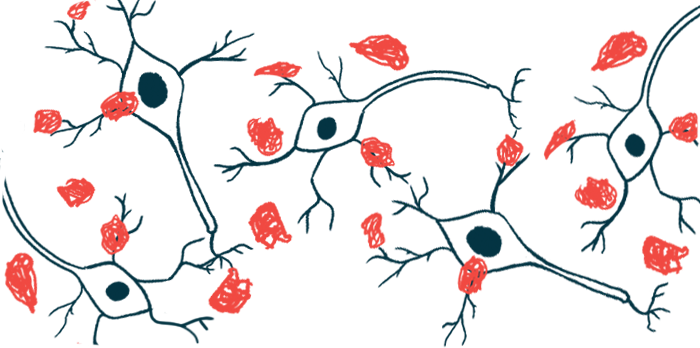Amyloid deposits found inside myelin-producing cells in man, 64
Case report may be first to describe toxic clump buildup in Schwann cells

A report on a 64-year-old man with familial amyloid polyneuropathy (FAP) may be the first to describe the buildup of disease-causing toxic clumps called amyloid deposits inside Schwann cells, specialized nervous system cells.
Schwann cells wrap around nerve fibers, covering them with myelin, a fat-rich protective layer that is key for the efficient transmission of electrical impulses between nerve cells. In FAP, there is progressive damage and loss of nerve fibers, as well as shrinkage of Schwann cells.
Knowing of the presence of intracellular (within-cell) amyloid deposits in Schwann cells and its association with nerve fiber degeneration could help medical professionals better understand how FAP develops and how to best treat it, the researchers wrote. The case report, “Hereditary Transthyretin Amyloidosis Neuropathy with Intracellular Amyloidosis and Inclusions,” was published as a letter in the Canadian Journal of Neurological Sciences by researchers at McMaster University and the University of Alberta.
FAP is a hereditary form of transthyretin amyloidosis (ATTRv). It occurs due to mutations that code for a faulty version of the transthyretin (TTR) protein that is prone to form toxic clumps known as amyloid deposits.
These aggregates build up in the body’s organs, causing damage. In FAP, this mainly occurs in the peripheral nerves, those outside the brain and the spinal cord, resulting in symptoms of polyneuropathy (damage to multiple peripheral nerves) such as numbness and weakness in the extremities.
Deposits typically form outside cells
Amyloid deposits typically accumulate outside cells, but “there is evidence of intracellular amyloid deposition in ATTRv and non-ATTRv disorders,” the researchers wrote. “In the nerve biopsies from ATTRv patients, amyloid fibrils were found sometimes entangled and fused with the membranes of [Schwann cells] and … capillaries [small blood vessels],” they wrote.
The case report described what the researchers said may be “the first” reported FAP case with amyloid deposits inside Schwann cells.
The man had been experiencing worsening pain and sensory loss in his arms and legs for 1.5 years. This led to foot drop, a difficulty in lifting the front part of the feet, causing him to need braces and a walker. He had a history of psoriasis, an autoimmune skin disease, and had not received treatments that could potentially damage nerves.
During a neurological examination, doctors found the man’s strength was good in the upper parts of the limbs but weaker at the extremities. Further testing revealed long-term damage to certain nerve fibers in the arms and legs, with loss of motor and sensory responses.
Blood testing showed high levels of markers of damage to the kidneys and the heart. “Given that reversible causes for polyneuropathy were not found, genetic testing was pursued,” the researchers wrote. This revealed Val30Met, the most common FAP-causing mutation.
A nerve biopsy to examine a piece of the sural nerve, which runs down the back of the calf, under a microscope confirmed the presence of amyloid deposits, and the man was started on Amvuttra (vutrisiran), an injectable treatment approved for adults with FAP.
More detailed examination of the sural nerve showed severe damage, with a loss of nerve fibers, particularly those covered by myelin. Amyloid deposits were detected inside Schwann cells, as well as inside cells lining capillaries and adjacent tissue.
“The presence of intracellular amyloidosis … in [Schwann cells] may result in the loss of [Schwann cell] functions particularly remyelination/regeneration of nerve fibers,” the researchers wrote. “While the pathogenesis [underlying mechanisms] of ATTRv warrants further investigation, our present case demonstrates [Schwann cells] intracellular amyloidosis … in association with [nerve fiber] degeneration and contributes to the understanding of the pathogenic process of ATTRv in the peripheral nerve,” the team concluded.







